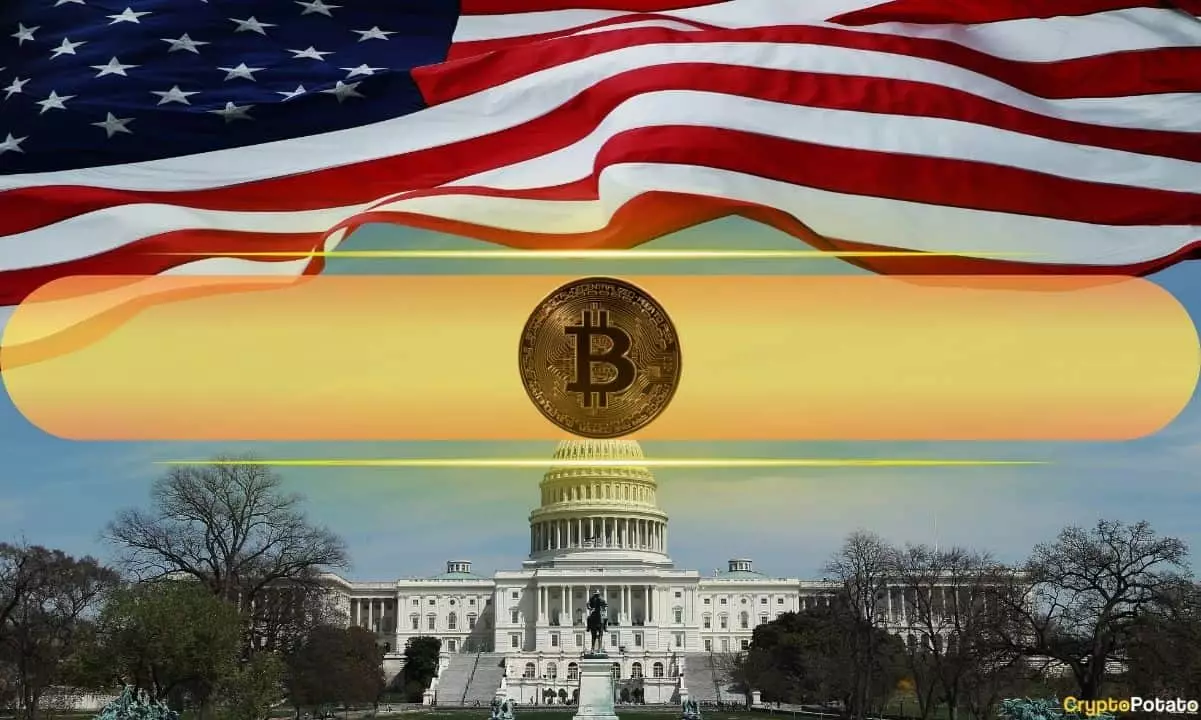In an unprecedented move that could potentially reshape the landscape of U.S. financial policy, Bo Hines, the Executive Director of the President’s Council of Advisers on Digital Assets, recently elaborated on the ambitious proposal of establishing a U.S. Bitcoin Reserve. This initiative, which is currently in discussions within the Trump administration, goes beyond mere speculation; it represents a strategic pivot towards utilizing alternative government revenue streams to acquire Bitcoin. What differentiates this move from past attempts at economic innovation is its focus on integrating modern technology into the fabric of financial governance, all while attempting to secure America’s position as a leader in the crypto sphere.
What Hines expressed in his interview is not just a thought experiment but a masterclass in financial ingenuity. By exploring revenue channels like tariffs and the revaluation of gold reserves, the administration is flirting with an audacious approach that could yield dividends for the U.S. economy. For too long, conventional methods of generating revenue have stifled innovation; this new proposition is an apt countermeasure that could lead to the much-needed evolution of our financial strategies.
Rethinking Tariffs and Gold Reserves
The contemplation of using tariff revenue as a source for Bitcoin purchases strikes at the heart of practical governance. Hines indicated that future tariff income could serve as a non-budgetary funding stream, enabling the government to acquire Bitcoin without the painful reallocations often entailed in federal budgeting. This insight is vital; it highlights a way to circumvent the traditional constraints of fiscal policy while still harnessing new innovative assets like Bitcoin.
Moreover, the proposal to revalue the staggering amount of gold certificates currently listed at a deflated historical price provides an intriguing perspective on our existing assets. The prospect of adjusting the value of these certificates from an outdated $43 an ounce to an approximate market value of $3,200 presents an opportunity to create a paper surplus sufficiently robust to enhance Bitcoin purchases. This is not merely financial wizardry but an essential acknowledgment of market realities, and it begs the question: why cling to antiquated measures when modern solutions are at our fingertips?
The Political Landscape and Legislative Challenges
Despite the forward-thinking proposals laid out by Hines, one cannot ignore the arduous path this initiative must navigate in Congress. While the introduction of the Bitcoin Act of 2025, spearheaded by Senator Cynthia Lummis, signifies bipartisan recognition of Bitcoin’s potential, the political climate remains fraught with caution. Skepticism surrounding cryptocurrencies is still dominant in some circles, making it imperative for proponents to advocate the benefits while addressing concerns over security and market volatility.
The administration’s ambition to establish the Strategic Bitcoin Reserve—which initially relies on Bitcoin obtained through criminal and civil forfeiture—instructions for obtaining such a reserve without taxing the citizenry is commendable but must also be approached with transparency. The potential benefits of having a diverse asset reserve tied to digital currencies can only materialize if the public trusts these advancements.
Modernizing America’s Financial Landscape
Hines’ perspective on blockchain technology and digital assets serves as a crucial reminder that the traditional banking system is increasingly out of sync with the needs of today’s digitally-driven society. Beyond the bureaucratic slowdowns, hidden fees, and opaque transaction processes traditionally associated with banking, blockchain offers streamlined, cost-effective, and transparent solutions that could revolutionize financial interactions for all Americans.
The White House appears resolute in its ambition to position the United States as the “crypto capital of the world.” This vision coincides with a broader trend, where digital assets are not just treated as speculative investments but as essential components of a modernized economy. The proposed national digital asset framework that seeks to clarify and streamline federal policies around issues like tokenization and stablecoin development lends credibility to this vision.
In drawing this ambitious roadmap, the Trump administration may just succeed in activating a much-needed discourse around the modernization of our entire economic framework, pushing us toward an era where innovation reigns supreme over tradition.


Leave a Reply